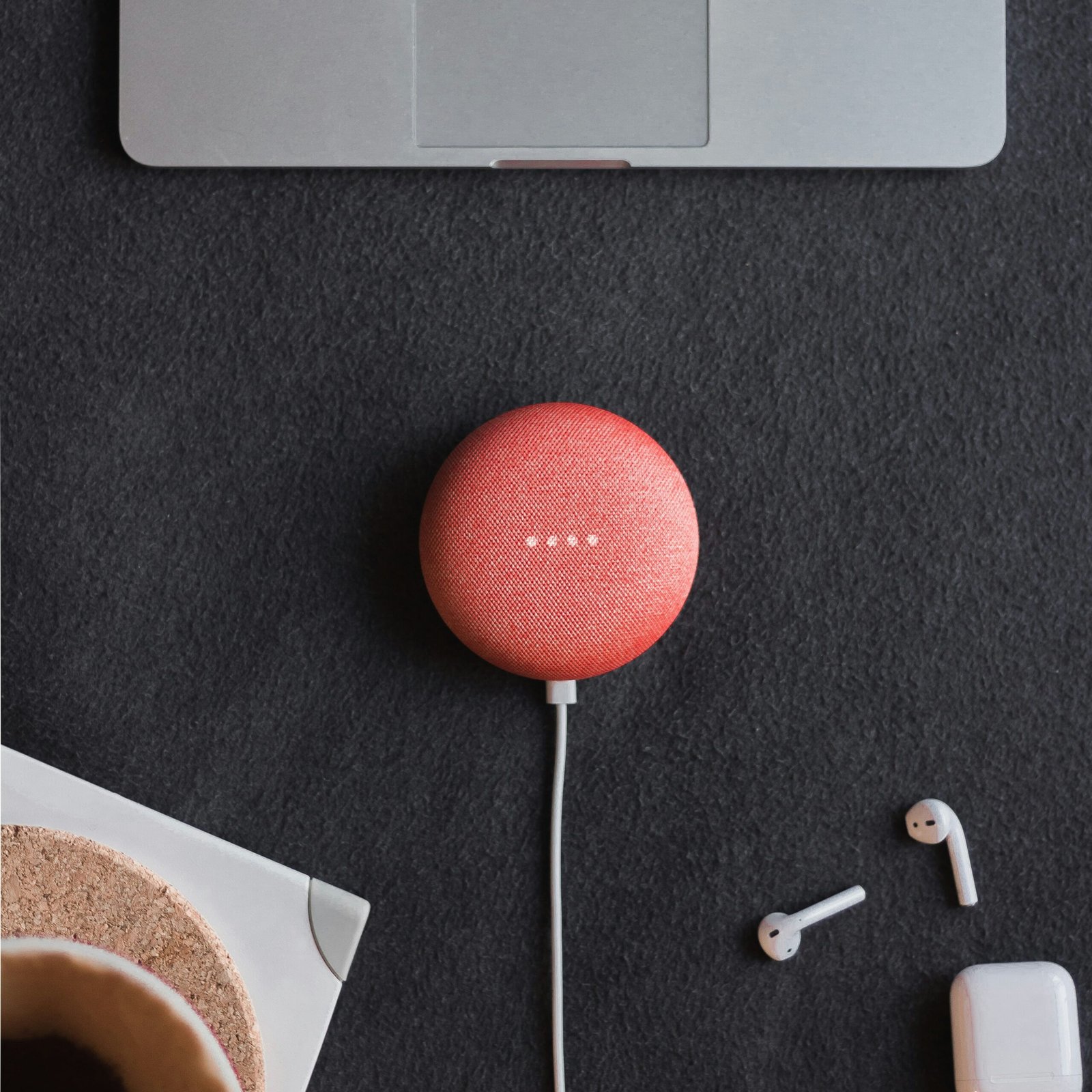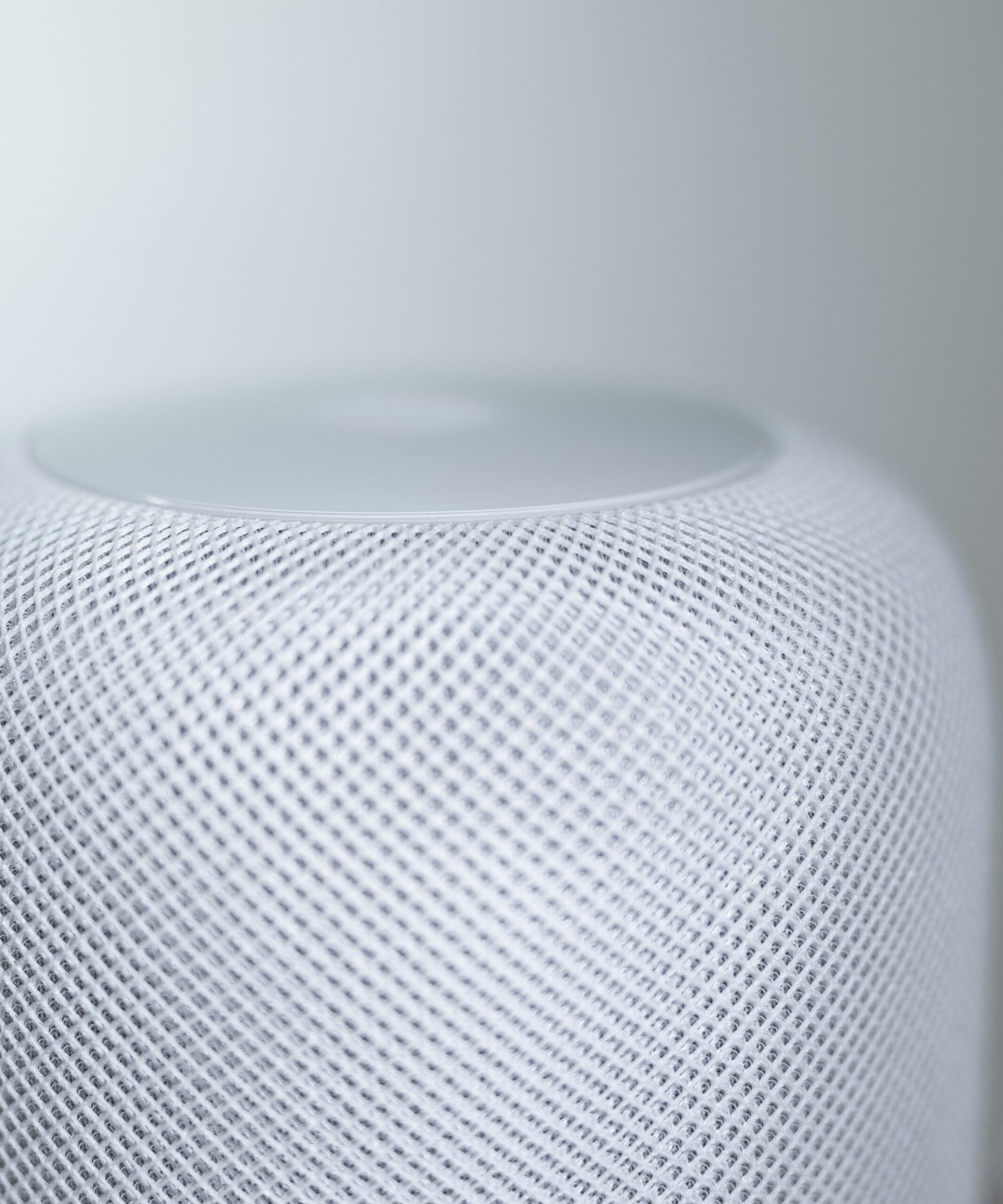Customize Your Google Home Experience: Tips and Tricks
Introduction to Google Home Customization
Google Home, the versatile smart speaker integrated with Google Assistant, has revolutionized how users interact with technology in their homes. From managing daily schedules to controlling smart home devices, Google Home offers a plethora of functionalities designed to streamline and simplify various tasks. However, to fully capitalize on its potential, it is crucial to customize its settings to align with your unique preferences and lifestyle.
Personalization not only optimizes the efficiency of your Google Home device but also enhances your overall user experience. You can tailor voice commands, set personalized routines, and even adjust the audio settings to make sure every interaction is as seamless as possible. These customizations enable a more intuitive and responsive environment, ensuring that Google Home genuinely feels like a supportive extension of your daily life.
Among the key features you can personalize are the wake words, voice match, and linked accounts. By customizing wake words, you can choose how you interact with your device verbally. Voice match ensures that Google Home recognizes who it is dealing with, offering personalized responses based on the user speaking. Linking various accounts allows synchronization of calendars, reminders, and other important applications, providing a cohesive and integrated experience.
The importance of these personalizations extends beyond mere convenience. They contribute to the device’s security, ensuring that sensitive information is accessible only to recognized voices. Furthermore, tailored routines can automate numerous daily tasks, from turning off lights at bedtime to playing your favorite morning podcast, making Google Home a truly indispensable tool in your daily routine.
In the following sections, we will delve deeper into specific tips and tricks for customizing Google Home. Whether you are a new user exploring these capabilities for the first time or an experienced enthusiast looking to fine-tune your device, these insights will help you maximize the utility and enjoyment of your Google Home experience.
“`html
Setting Up and Managing Multiple Users
Adding multiple users to a Google Home device ensures that each household member enjoys a personalized experience. To begin, open the Google Home app on your smartphone or tablet and tap on the device you wish to configure. Select the gear icon to access device settings, then choose “Voice Match.” This feature is pivotal for distinguishing users through their unique voice patterns, allowing Google Home to recognize who’s speaking.
Voice Match offers several benefits. Primarily, it customizes responses, ensuring Google’s answers are tailored to each user. For instance, when one user asks for their calendar update, Google Home provides details specific to that person’s schedule. Additionally, voice profiles can streamline other functionalities like sending personal messages or retrieving personalized suggestions, enhancing overall household efficiency.
Setting up Voice Match is straightforward. After selecting “Voice Match,” the app will guide users through a series of phrases. These prompts enable Google to familiarize itself with each user’s voice. The process typically takes a few minutes, and once completed, the device can switch between profiles effortlessly.
Multiple users on a single Google Home device can customize their individual preferences without disrupting others. Each user can set their default music service, preferred news sources, and manage their personalized routines. For example, while one person might enjoy starting their day with a news briefing and traffic updates, another may prefer a weather report followed by their favorite playlist. By recognizing distinct voice profiles, Google Home caters individually, ensuring a seamless blend of personalized experiences under one roof.
In sum, managing multiple users with Voice Match not only personalizes interactions but also maintains individual preferences, streamlining the Google Home experience for all users involved.
“`
Creating Routines for Seamless Daily Operations
Creating routines in Google Home can greatly enhance the efficiency of your daily operations by automating tasks and controlling smart home devices with minimal effort. With a few simple steps, you can set up and customize routines to suit your lifestyle and preferences. Detailed below are examples and instructions to guide you through the process of creating these routines, ensuring you get the most out of your Google Home experience.
Step-by-Step Instructions for Creating a Routine
To set up a routine, start by opening the Google Home app on your smartphone. Tap the ‘Routines’ tab, which can typically be found under account settings or directly on the home screen. Select ‘Add Routine’ to begin the customization process.
Name your routine to reflect its function, such as “Morning Wake-Up” or “Bedtime.” You will then be prompted to set a trigger for the routine. Triggers can include a specific time of day or a voice command. Next, choose the actions you want to include. For a morning routine, you might want it to turn on bedroom lights, read the daily weather forecast, and play your favorite playlist. Simply configure these actions by following the on-screen prompts and selecting from the available options.
Examples of Useful Routines
Morning Wake-Up Sequence
A morning wake-up sequence could start by turning on your bedroom lights slowly to emulate a sunrise, providing a gentle wake-up experience. Follow this with Google Home informing you about the day’s weather and top news headlines as you prepare for the day ahead.
Bedtime Routine
A bedtime routine can make winding down easier. You can set it to dim the lights, play calming music, and provide a brief overview of the next day’s schedule. Activating ‘Do Not Disturb’ mode ensures you are not disturbed during the night.
Smart Home Control
Google Home can manage your smart home devices seamlessly. For instance, a “Goodnight” command can lock the doors, turn off unnecessary lights, and adjust the thermostat to an optimal sleeping temperature. Similarly, an “I’m Home” routine can turn on lights and adjust room temperatures as you arrive home.
Integrating Google Home into your daily life through personalized routines not only streamlines your tasks but also enhances the convenience and comfort of your home. By taking a few minutes to set up these routines, you create a more dynamic and automated living experience.
Customizing Responses with Nicknames and Personalized Settings
One of the standout features of Google Home is its ability to offer personalized interactions tailored to individual preferences. This can be achieved through customization of responses using nicknames and personalized settings. Altering how the Google Assistant addresses you, changing the device’s name, and managing personal settings is straightforward, and can significantly enhance the user experience.
To begin with, users can personalize how Google Assistant addresses them by setting up nicknames. This can be done through the Google Home app by navigating to the section labeled “Personal info”. Here, users can enter their preferred nickname, ensuring that the assistant will refer to them in a more familiar and engaging manner. This subtle change can make interactions feel more personal and comfortable.
Changing the device’s name is another way to customize the Google Home experience. This can be particularly useful in households with multiple Google Home devices. By giving each device a unique name, users can easily distinguish between them and manage their smart home system more efficiently. This can be accomplished by opening the Google Home app, selecting the device, and accessing the settings menu. From there, users can rename the device to something more recognizable or meaningful.
Personalized settings go beyond just names and nicknames. To tailor responses even further, users can adjust personal settings such as their preferred news sources, commute information, and calendar events. Under the “More settings” menu in the Google Home app, users can select their favorite news outlets, set their home and work addresses for accurate traffic updates, and link their calendars for real-time scheduling assistance. These settings enable the Google Assistant to provide more relevant and timely information, ensuring a more efficient and customized experience.
By leveraging these customization options, Google Home users can create a more personalized and engaging interaction with their devices, ultimately enhancing their everyday digital experience.
Enhancing Entertainment with Voice Commands
Google Home offers a myriad of features to enrich your entertainment experience, allowing you to control various devices and services seamlessly through voice commands. To begin, link your Google Home with popular streaming services like Netflix, Hulu, and Disney+. Simply use the Google Home app to connect these accounts, allowing voice-activated control over your TV shows and movies. You can also link your Smart TV or Chromecast to Google Home for an enhanced experience.
Once your devices and services are connected, make the most of your Google Home’s capabilities by integrating voice control for TV functions. Commands such as “Hey Google, play The Crown on Netflix” or “Hey Google, pause the episode” bring ease and convenience to your viewing sessions. Navigation commands like “Hey Google, skip to the next episode” or “Hey Google, go back 10 minutes” ensure hands-free control, creating a fluid and interactive experience.
For music enthusiasts, Google Home can be your ultimate DJ. Connect streaming services like Spotify, Apple Music, or YouTube Music and enjoy limitless musical options. You can request specific songs, artists, or genres by saying “Hey Google, play jazz music” or “Hey Google, play my workout playlist.” Personalized playlists can also be set up by instructing Google Home to remember specific preferences, enhancing your musical journey.
Diving deeper into the capabilities, explore lesser-known voice commands to maximize your entertainment experience. For example, asking “Hey Google, what’s the latest news?” or “Hey Google, play a trivia game” adds informative and interactive aspects to your leisure time. Google Home can also manage audiobook playback via voice commands, providing another dimension to your entertainment options.
By leveraging the full potential of Google Home’s voice command features, you can transform your entertainment experience, making it more personalized and engaging. Whether you’re controlling your TV functions, listening to custom playlists, or exploring new interactive activities, Google Home serves as a versatile companion in your daily entertainment routine.
Optimizing Smart Home Integrations
Integrating your various smart home devices with Google Home can significantly enhance your living space’s convenience and efficiency. A well-orchestrated smart home saves time, improves security, and offers unparalleled control over your environment. Start by ensuring that compatible devices connect seamlessly with Google Home. Common integrations include smart lights, thermostats, locks, and security cameras.
Smart lights, such as those from Phillips Hue or LIFX, connect easily with Google Home. To achieve this, simply install the lights, sync them with their respective apps, and link those apps to Google Home through the Home app. As a result, you’ll be able to control the intensity, color, and on/off status of your lights using simple voice commands.
Thermostats like the Nest or Ecobee can also be integrated with Google Home. After connecting them via their native apps, you’ll gain the ability to adjust temperatures or switch modes using voice commands. This ensures an optimal climate control experience as the intuitive system responds to your preferences and schedules efficiently.
Smart locks, such as August or Yale locks, enhance home security by allowing you to control access to your home remotely. Linking these devices to Google Home involves following the lock manufacturer’s setup process and integrating the corresponding app. Once connected, voice commands enable you to lock or unlock doors and check the status of entry points, ensuring peace of mind even when you are away.
Moreover, integrating security cameras like those from Ring or Arlo ensures comprehensive home surveillance. By syncing these cameras with Google Home, users can view live feeds, receive alerts, and review security footage conveniently. This integration keeps you updated on your home’s security status at any moment.
Creating device groups in the Google Home app can streamline control further. For instance, you can establish a group for all the lights on one floor or a specific room. Voice commands like “turn off downstairs lights” become possible, simplifying multiple device management into single, effortless tasks.
To effectively manage these integrations, regularly update your devices and apps to the latest software versions. This ensures smooth performance and access to new features, making your smart home both efficient and future-proof.
Using Google Home for Productivity
Google Home offers various functionalities designed to boost your productivity and streamline daily tasks. One of the fundamental ways to leverage Google Home is by setting and managing reminders. Simply instructing your device by saying, “Hey Google, set a reminder for [task] at [time],” can help you keep track of important tasks and deadlines, ensuring you stay on top of your schedule.
Another powerful feature is the ability to create and manage calendar events. By linking your Google Calendar to your Google Home device, you can effortlessly create events and get updates on your schedule. For instance, you can say, “Hey Google, add a meeting with [person] on [date] at [time] to my calendar,” enabling you to keep your day organized without lifting a finger.
Making to-do lists with Google Home can also significantly enhance productivity. You can add tasks to your list by saying, “Hey Google, add [task] to my to-do list.” Moreover, you can review your tasks at any time by asking, “Hey Google, what’s on my to-do list?” This capability keeps your tasks in a central, easily accessible location, helping you stay focused and organized.
Hands-free calling and messaging is another invaluable feature. By connecting your Google Home to your contacts and messaging apps, you can use voice commands to make calls or send messages. For example, you can say, “Hey Google, call [contact]” or “Hey Google, send a message to [contact] saying [message].” This functionality adds a layer of convenience, allowing you to stay connected without the distraction of picking up your phone.
Enhance your productivity further by integrating third-party apps and services with Google Home. Apps like Todoist, Any.do, and Slack can be linked to your device, enabling you to manage tasks, projects, and communications more effectively. These integrations provide a seamless workflow, ensuring that your productivity tools are always at your fingertips.
Troubleshooting Common Issues
Google Home is designed to streamline your smart home experience, but like all technology, it can sometimes encounter issues. Addressing these challenges promptly ensures you continue to enjoy seamless integration and functionality. Common problems include connectivity issues, unresponsive devices, and incorrect responses from your Google Assistant. Here, we’ll provide practical troubleshooting steps to get your Google Home back up and running efficiently.
Connectivity problems can often be attributed to either network or device settings. To resolve these, first, ensure your Wi-Fi network is functioning properly. A simple router reboot can often clear up many issues. Additionally, make sure your Google Home device is within range of your Wi-Fi network. Check that the device is connected to the correct Wi-Fi network in the Google Home app. If connectivity problems persist, resetting your Google Home might be necessary. To reset, press and hold the microphone mute button for about 15 seconds until you hear the confirmation chime.
If your Google Home becomes unresponsive, a few steps can help. Begin by checking that the device is powered on and connected to the internet. If it remains unresponsive, try restarting it by unplugging it from the power source, waiting a few seconds, and plugging it back in. Ensure that the software is up to date by accessing the device settings in the Google Home app and checking for any available updates. If the issue persists, perform a factory reset as a last resort using the same method as described earlier for connectivity issues.
Incorrect responses from your Google Assistant can be frustrating. This problem may stem from misunderstood commands or microphone issues. Start by ensuring the microphone is not muted and is clean. Rephrasing commands can also help, as the assistant’s AI may interpret alternative wording correctly. In the Google Home app, check your personal information and addresses to ensure they are accurate, as this can affect response relevance. Training the assistant to recognize your voice better can enhance accuracy—use the Voice Match feature available in the app.
Optimizing your network settings can significantly improve performance. Make use of both the 2.4 GHz and 5 GHz bands if available, with Google Home devices often performing better on the less crowded 5 GHz band. Consider moving other high-bandwidth devices to the 2.4 GHz band to reduce interference. Regularly updating your router’s firmware can also boost connectivity and performance.





No Comments